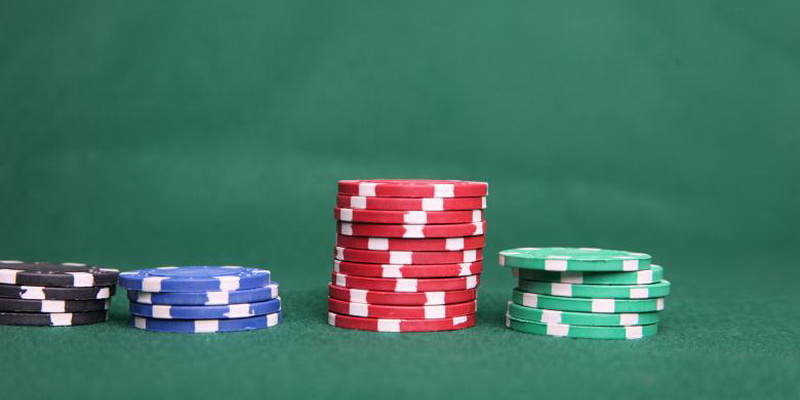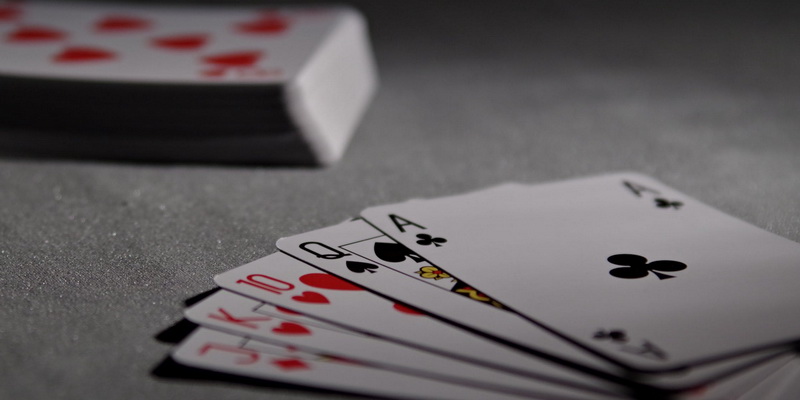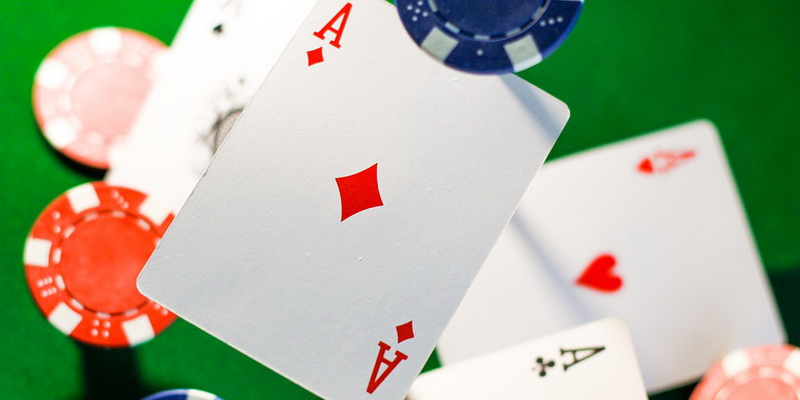Indian poker is a card game that has been around for centuries. Indian Poker rules are not as complicated to learn as other Poker card games, and You can play this type of poker with a standard deck of playing cards. In this article, poker rules are outlined, and we will also go over how to play Indian poker.

What Is Indian Poker?
Blind Man’s Bluff, also known as Indian Poker, is a type of poker game in which players hold their cards to their foreheads. In order to keep their hands hidden, players only see their opponents’ hands.
A game of strategy, ambiguity, and bluffs, this type of poker is similar to other varieties of poker. The twist, though, is that it’s the opposite of the usual. It’s because everyone else will see your card but you! In other words, the strategy you use depends on the cards your opponent is playing.
Due to its visibility, it may be easier to play than other variations, but Indian Poker rules actually are the opposite. A better understanding of Indian Poker proves that having more data does not necessarily make it easier to play.
There is no reference to India in the name of Indian Poker. The comparison is more of a crude observation of the similarity between a Native American headdress and the way the cards look on the forehead.
What Do You Need to Play Indian Poker?
Playing Indian Poker doesn’t require a lot of money since chips are rarely involved. There are many variations of the game, but the most common requires a deck of cards and a shot glass- if you’re game for a little more fun. You can play this type of poker with these devices, and you can try the variations available.

This game’s versatility became one of the things that made it popular with poker players. You can customize Indian Poker according to your own preferences; there is no set of rules applicable to it. There is just one rule: each player’s cards will always be visible to all players, except the player holding them.
2 to 7 players will be needed in addition to the cards and shot glasses. Therefore, three players are recommended for the game to begin.
Other variations, such as those where we receive two cards per player and community cards are in play, can also include two players. A game with more players is more interesting, and formulating winning strategies becomes more challenging.
How to Play Indian Poker?
While it is easy to play Indian Poker, the game is difficult to win. It is a poker game where the dealer deals out one card to each player, just like most poker games. The players will stick their cards on their foreheads (without seeing their own cards) once they each have one.
The game is reversed, so instead of bluffing with your own cards and forcing your opponents to fold, you’ll bluff with the cards that your opponents have and convince them to continue.
You can make your opponents think they are holding a particularly high card since they are unaware of their own cards.

Playing this variation is so different from the poker we normally play that it adds to the complexity. Indian Poker flows in reverse, and the other players will be “punished” for falling for your trap if you use the data that you have properly.
Game’s Objectives
Getting a high card in play is all you need to win, and that’s it. No money is at stake, so the other players have more incentive to fold when they think their cards are weak. In the event that a caller loses after one round of betting, whatever’s in the shot glass will be drunk.
The player with the lowest card takes the shot glass if more than two players are remaining after the betting round.
Each player has placed a shot glass or a wager before a game starts in some variations. For example, in a game with seven players, the loser or the player whose card is the lowest and who is still called will have to drink all of the beer.
In the event of a higher ante, there will be greater motivation for each player to fold and leave the game.
When playing this game, it is also an important factor to consider. By the end of the betting round, there should be at least two players left in this game, unlike other types of poker where players can force their opponents to fold.

In order to win, you need to keep at least one other player in the game rather than intimidate them with the cards you have.
Dealing
According to the most simplified version of the game-the one that is considered the original-each player places an ante and is dealt a single card.
A face-down deck of cards is dealt. While holding their card, players are careful not to look at the face of it. The purpose of this is to keep the truth from them. Each player holds the cards near his or her forehead so that the others can see them.
The Bet
A betting round follows the deal.
If you wish to bet while playing poker, you may do so in one of three ways:
· Call. It is possible to call by wagering the amount wagered by a previous player. For example, a player who bets 5 cents, then raises the bet to a dime (raises 5 cents), may call your turn by matching the 10 cent bet amount with 5 cents on their turn.
· Raise. Raising involves first placing a wager equal to your current stake, then placing more. If other players wish to remain in the game, they must match the increased wager or bet amount.
· Fold. When you don’t bet, you may fold your cards. The pot does not require you to put money in, but you sit out on the hand. Thus, regardless of how much you bet, you are unable to win the pot.
Continually, players are betting to the end until they fold, call, or raise. The betting round ends after a raise has been called by everyone remaining in the hand, and no further raises have been made.
Battle
The showdown begins after the betting concludes. If your card is higher than anyone else’s, you win. Tie situations result in a split pot. There is no ranking based on suit.
The highest and lowest ranking cardholders may also share the pot, or the low card wins.
Indian poker rules – Conclusion
Playing Poker (EN) with friends is a popular variation. As an ante, you can either drink or use money. The game’s purpose is to make the opponent believe that they have a better hand than they actually do. We hope that this article has been informative. If so, please share it with others.